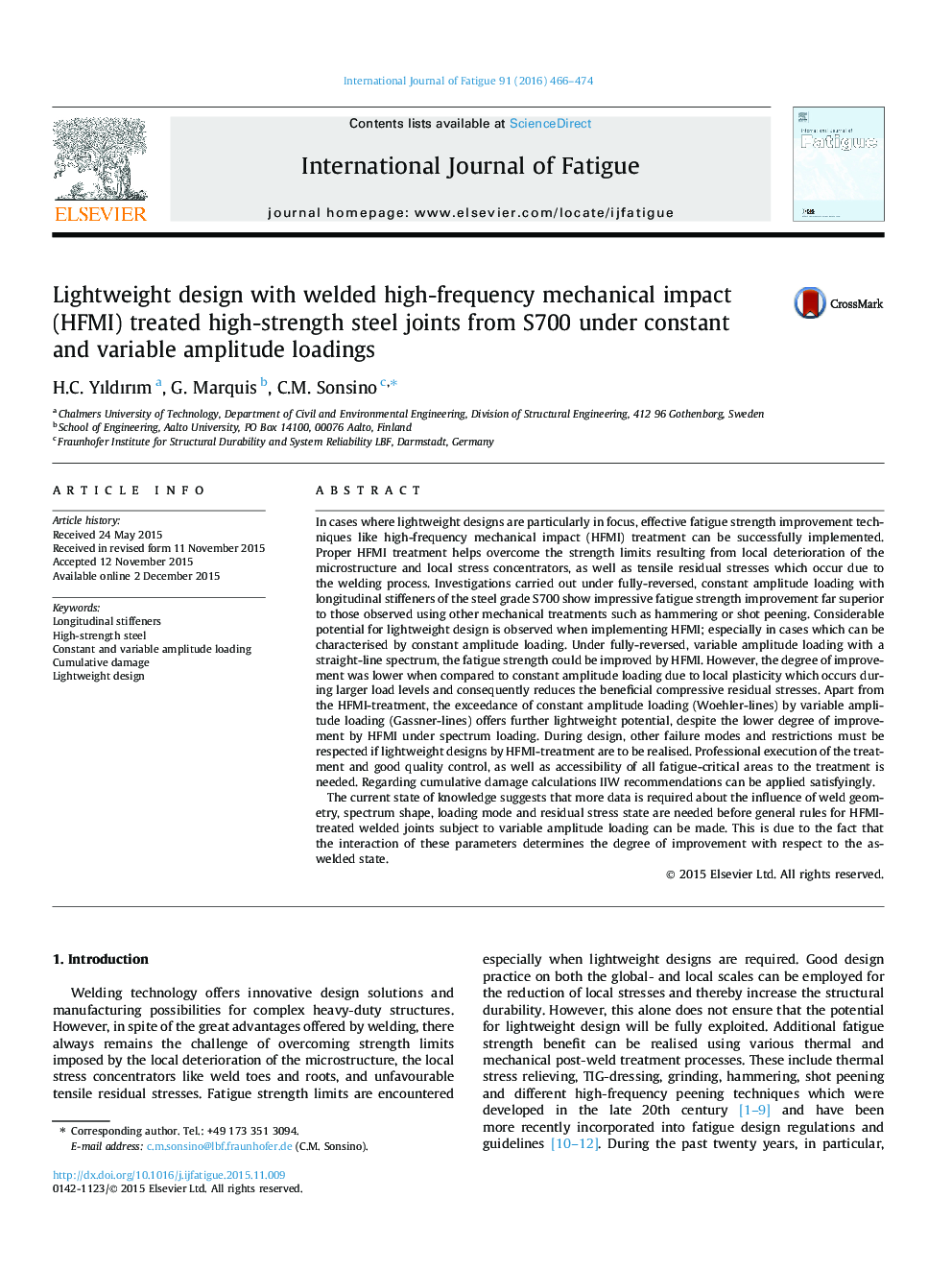| کد مقاله | کد نشریه | سال انتشار | مقاله انگلیسی | نسخه تمام متن |
|---|---|---|---|---|
| 780594 | 1463737 | 2016 | 9 صفحه PDF | دانلود رایگان |

• Improvement of fatigue strength.
• Lightweight design by considering of spectrum loading.
In cases where lightweight designs are particularly in focus, effective fatigue strength improvement techniques like high-frequency mechanical impact (HFMI) treatment can be successfully implemented. Proper HFMI treatment helps overcome the strength limits resulting from local deterioration of the microstructure and local stress concentrators, as well as tensile residual stresses which occur due to the welding process. Investigations carried out under fully-reversed, constant amplitude loading with longitudinal stiffeners of the steel grade S700 show impressive fatigue strength improvement far superior to those observed using other mechanical treatments such as hammering or shot peening. Considerable potential for lightweight design is observed when implementing HFMI; especially in cases which can be characterised by constant amplitude loading. Under fully-reversed, variable amplitude loading with a straight-line spectrum, the fatigue strength could be improved by HFMI. However, the degree of improvement was lower when compared to constant amplitude loading due to local plasticity which occurs during larger load levels and consequently reduces the beneficial compressive residual stresses. Apart from the HFMI-treatment, the exceedance of constant amplitude loading (Woehler-lines) by variable amplitude loading (Gassner-lines) offers further lightweight potential, despite the lower degree of improvement by HFMI under spectrum loading. During design, other failure modes and restrictions must be respected if lightweight designs by HFMI-treatment are to be realised. Professional execution of the treatment and good quality control, as well as accessibility of all fatigue-critical areas to the treatment is needed. Regarding cumulative damage calculations IIW recommendations can be applied satisfyingly.The current state of knowledge suggests that more data is required about the influence of weld geometry, spectrum shape, loading mode and residual stress state are needed before general rules for HFMI-treated welded joints subject to variable amplitude loading can be made. This is due to the fact that the interaction of these parameters determines the degree of improvement with respect to the as-welded state.
Journal: International Journal of Fatigue - Volume 91, Part 2, October 2016, Pages 466–474